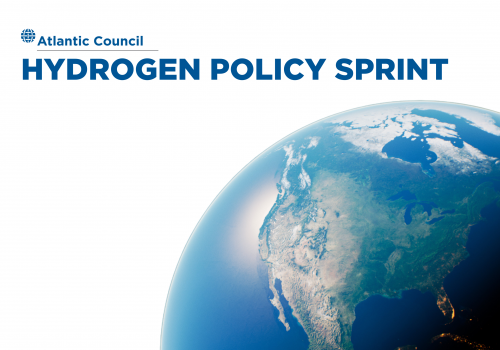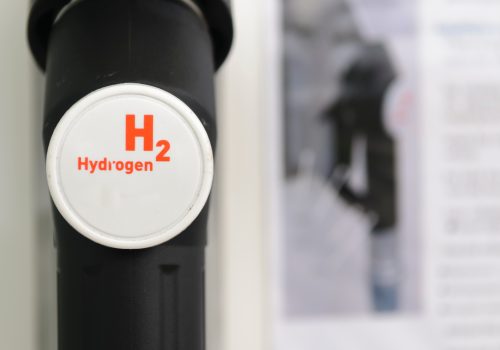Brief 2: Producing clean hydrogen at scale in the United States
The Atlantic Council Hydrogen Policy Sprint explores opportunities and challenges for the development of a clean hydrogen economy in the United States. This second brief discusses pathways for clean hydrogen production and the challenges and opportunities for scaling production in the United States. Authors David W. Yellen and Randolph Bell explore the tradeoffs between various clean hydrogen production methods, regional opportunities for development, and how policy could begin to spur production.
Key takeaways
- As ambitions for a clean hydrogen economy in the United States continue to grow, the largest obstacle to realizing those ambitions will likely be scaling clean hydrogen production quickly and economically to meet rising demand. Hydrogen demand could at least double over the next two decades if it is deployed into industrial applications and buildings and blended into natural gas infrastructure, and it will grow by far more with broader use in long-distance transportation and energy storage applications. Meeting that demand with a single production pathway will be incredibly difficult; attempting to produce that volume using renewable electrolysis alone would require a massive build-out of renewable capacity far beyond the most optimistic renewables deployment scenarios. Multiple production pathways will thus be necessary to deploy hydrogen technologies quickly and efficiently in the short term and to reach scale in the longer term.
- The United States has a unique opportunity to pursue several clean hydrogen production pathways, including renewable electrolysis, steam methane reforming (SMR) with carbon capture, biomass to hydrogen, and high-temperature electrolysis using nuclear power, among others. Each pathway introduces tradeoffs—from cost and land use concerns to continued fossil fuel reliance—that will vary by region, but the most important differentiator will continue to be the carbon intensity of production. Where renewable resources are relatively cheap and abundant, renewable electrolysis will likely be the most popular production pathway. But where natural gas resources are cheap and there is legacy infrastructure, SMR with carbon capture or methane pyrolysis—or an alternative feedstock like biomethane—may be the most viable. Other methods—in particular, biomass to hydrogen and nuclear-powered electrolysis—may also play a critical role.
- Reaching cost competitiveness with incumbent hydrogen production methods will require innovation and scale for any of the clean hydrogen production pathways. Policy support, both in the form of innovation funding—which the Biden-Harris administration has signaled a continued commitment to—and demonstration and deployment funding or incentives, such as a clean hydrogen production tax credit, will be critical to short-term growth in clean production capacity. Technology-neutral incentives, focused on carbon intensity rather than production method, will most effectively accelerate clean hydrogen production, help clean production methods become competitive and innovate more quickly, and meet the challenge of supplying the US hydrogen economy.
- If the United States takes advantage of the various production pathways available to it, it may have the unique ability to produce all of its clean hydrogen domestically, while countries in Europe and Asia look to import that fuel from abroad.
Hydrogen has gained significant momentum in recent months as governments and private sector leaders have announced new policies, projects, and investments, and it will be critical to the world’s ability to reach net-zero by midcentury. But the United States has lagged behind Europe and Asia in political support, market certainty, and new project development for clean hydrogen.
In order for hydrogen to become a viable decarbonization solution in the United States, a narrative shift and a framework of policies that can enable its deployment are needed. The Atlantic Council’s hydrogen policy sprint will include five briefs and a final report: the first two focus on pathways and challenges for clean hydrogen production, the third will focus on storage and transportation infrastructure, the fourth and fifth on hydrogen demand and deployment, and the final report will summarize the opportunities and challenges and explore how state and federal policies can spur the development of a clean hydrogen economy in the United States.
Brief authors

The Global Energy Center develops and promotes pragmatic and nonpartisan policy solutions designed to advance global energy security, enhance economic opportunity, and accelerate pathways to net-zero emissions.
Image: Photo: Shutterstock/Chris J. Mitchell



